
Library >> Research
>> 100% Renewable Energy Reports
The
GENI Initiative
and
100% Renewable Energy Reports
Here you will
find research on projects that forward the vision of each nation connected to a global grid of electricity, supplying 100% Renewable Energy:
- Links to 100% Renewable Energy Reports by GENI:
- Reports by GENI on National Renewable Energy Potential:
- Links to 100% Renewable Energy Reports by others:
 California is in the midst of a water crisis. By
The Republic of Chile has energy shortages and needs energy.
Key factors have contributed to this shortage throughout the past decade, including limited indigenous fossil fuels,
droughts and a natural gas shortage from Argentina in 2004. In addition to energy shortages,
Chile is experiencing economic and population growth. The investment in a renewable energy mix is a high priority to provide a more secure energy supply,
to reduce greenhouse emissions and to supply sustainable and healthier energy. California is in the midst of a water crisis. By
The Republic of Chile has energy shortages and needs energy.
Key factors have contributed to this shortage throughout the past decade, including limited indigenous fossil fuels,
droughts and a natural gas shortage from Argentina in 2004. In addition to energy shortages,
Chile is experiencing economic and population growth. The investment in a renewable energy mix is a high priority to provide a more secure energy supply,
to reduce greenhouse emissions and to supply sustainable and healthier energy.
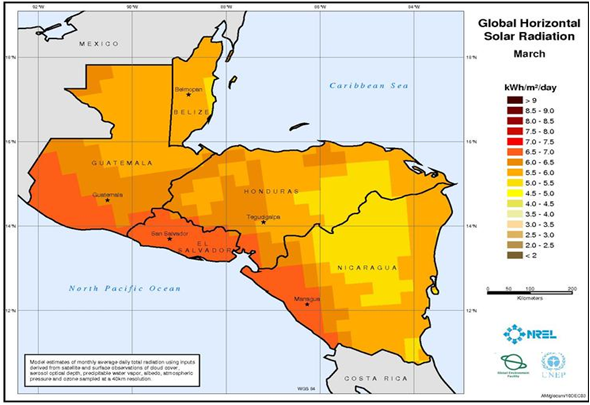 The
region is wealthy in renewable resources and is poised
to restructure its energy sectors, particularly in
electricity generation, so as to be renewables-based.
Developing renewables-based energy sectors has become
central to the economic, development, and poverty
alleviation strategies of all Central American countries.
Regional interconnection and integration present
a mechanism for the region to work together to increase
economic and energy security, decrease reliance on
foreign oil, develop with green economies, and decrease
poverty. The
region is wealthy in renewable resources and is poised
to restructure its energy sectors, particularly in
electricity generation, so as to be renewables-based.
Developing renewables-based energy sectors has become
central to the economic, development, and poverty
alleviation strategies of all Central American countries.
Regional interconnection and integration present
a mechanism for the region to work together to increase
economic and energy security, decrease reliance on
foreign oil, develop with green economies, and decrease
poverty.
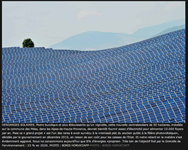 This report focuses on the analysis of various groups reviewing the renewable energy
potential within France. While those plans have focused on bringing the country to 23%
renewable energy by 2020, this report takes a more agressive view. It raises the
possibility of having Franceís electricity powered by 100% renewable energy at the
earliest possible date.
This report focuses on the analysis of various groups reviewing the renewable energy
potential within France. While those plans have focused on bringing the country to 23%
renewable energy by 2020, this report takes a more agressive view. It raises the
possibility of having Franceís electricity powered by 100% renewable energy at the
earliest possible date.
 This report focuses on how and whether it is
possible for Germany to have all of its electricity generated by renewable power plants within the next ten years.
It is fairly obvious that if possible, the chances of fruition are extremely low. Nevertheless is it extremely important to show decision makers and leaders the high potential,
technology and possibility of green energy in Germany. This report focuses on how and whether it is
possible for Germany to have all of its electricity generated by renewable power plants within the next ten years.
It is fairly obvious that if possible, the chances of fruition are extremely low. Nevertheless is it extremely important to show decision makers and leaders the high potential,
technology and possibility of green energy in Germany.
 This paper posits that Spain
is theoretically capable of obtaining 100% renewable energy by 2020 -- theoretically only
because of the logistical issues involved. Also, Spainís slow recovery from the 2008 global
recession has caused some reticence about additional spending. Even with the previously
mentioned factors though, Spain does have other features that enable them to reach 100%
renewable energy. Spain has a well-established foundation. Again, 35% of demand was met
with renewable energy. The installed capacity of renewable energy is constantly increasing.
Spainís renewable resources provide great potential for the generation of energy.
Some policies have been created to promote and facilitate the usage of renewables. This paper posits that Spain
is theoretically capable of obtaining 100% renewable energy by 2020 -- theoretically only
because of the logistical issues involved. Also, Spainís slow recovery from the 2008 global
recession has caused some reticence about additional spending. Even with the previously
mentioned factors though, Spain does have other features that enable them to reach 100%
renewable energy. Spain has a well-established foundation. Again, 35% of demand was met
with renewable energy. The installed capacity of renewable energy is constantly increasing.
Spainís renewable resources provide great potential for the generation of energy.
Some policies have been created to promote and facilitate the usage of renewables.
 This paper posits that Turkey
is capable of obtaining 100% renewable energy by 2020. In 1970, the renewable energies could meet about 35% of demand. while in 2010, 10% of current demand was met
with renewable energy. Current and even future electricity demand for 2020 could easily be met with renewable energies for an economically feasible situation. Even the primary energy demand could be covered by renewable energies, if sufficiently exploited! The transition from a fossil fuel based energy system to a renewable energy system is possible, if more commitment is shown. This paper posits that Turkey
is capable of obtaining 100% renewable energy by 2020. In 1970, the renewable energies could meet about 35% of demand. while in 2010, 10% of current demand was met
with renewable energy. Current and even future electricity demand for 2020 could easily be met with renewable energies for an economically feasible situation. Even the primary energy demand could be covered by renewable energies, if sufficiently exploited! The transition from a fossil fuel based energy system to a renewable energy system is possible, if more commitment is shown.
 This
report focuses on how 100% renewable energy in Japan
is possible by 2020. Japan is now in a severe condition
with their energy because of the 2011 nuclear power
plant disaster caused by earthquake and tsunami.
Since then, Japan has struggled to manage its energy
in peak times. To solve this problem, the Japanese
government and people are trying to shift their energy
to renewable sources. So far, achieving this goal
has been exceedingly low, even if it is possible.
Despite this outcome, this report takes a strong
position on energy issues. The purpose of this report
is to demonstrate the feasibility of 100% renewable
energy for Japan to decision makers, political leaders
and the public. This
report focuses on how 100% renewable energy in Japan
is possible by 2020. Japan is now in a severe condition
with their energy because of the 2011 nuclear power
plant disaster caused by earthquake and tsunami.
Since then, Japan has struggled to manage its energy
in peak times. To solve this problem, the Japanese
government and people are trying to shift their energy
to renewable sources. So far, achieving this goal
has been exceedingly low, even if it is possible.
Despite this outcome, this report takes a strong
position on energy issues. The purpose of this report
is to demonstrate the feasibility of 100% renewable
energy for Japan to decision makers, political leaders
and the public.
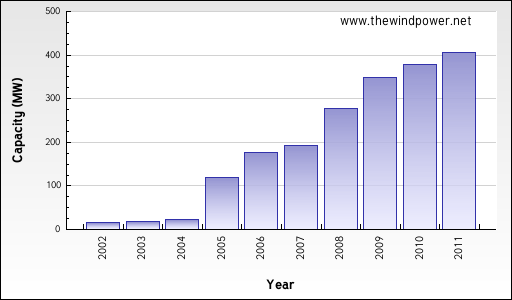 South
Korea is a country without many primary resources;
the country imports most of its energy. It is one
of the 5 biggest importers of fuel fossil energy
in the world. To be less dependent on foreign countries
includes reducing these imports, so the part played
by using renewable energy has to be increased. Moreover,
the greenhouse gases emissions have to be reduced
or at least the rise of such emissions has to be
stopped. South
Korea is a country without many primary resources;
the country imports most of its energy. It is one
of the 5 biggest importers of fuel fossil energy
in the world. To be less dependent on foreign countries
includes reducing these imports, so the part played
by using renewable energy has to be increased. Moreover,
the greenhouse gases emissions have to be reduced
or at least the rise of such emissions has to be
stopped.
 Australia ranks among the highest nations in the
world for per capita greenhouse gas emissions;
its energy capacity is mostly made up of fossil fuels,
and it is one of the largest exporters of coal and
uranium. In contrast, Australia boasts vast wind and
solar energy resources that could be potentially exploited.
This paper examines the economic argument for Australia
to make changes in its energy consumption and mineral
exports and take advantage of its potential by pursuing
zero emissions renewable energy policies. Australia ranks among the highest nations in the
world for per capita greenhouse gas emissions;
its energy capacity is mostly made up of fossil fuels,
and it is one of the largest exporters of coal and
uranium. In contrast, Australia boasts vast wind and
solar energy resources that could be potentially exploited.
This paper examines the economic argument for Australia
to make changes in its energy consumption and mineral
exports and take advantage of its potential by pursuing
zero emissions renewable energy policies.
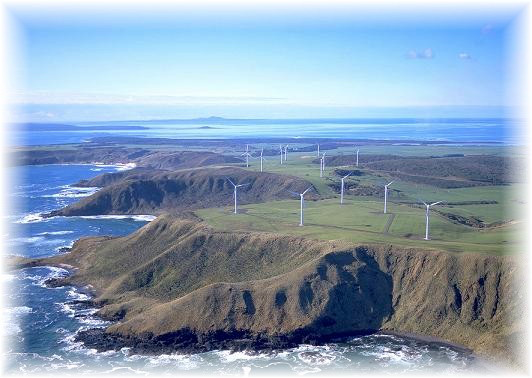 In
this document, you will find information on the energy potential on Small Islands
States. On each page of this PDF format, you will find a consistent listing
of renewable resource features presented for each Island. In
this document, you will find information on the energy potential on Small Islands
States. On each page of this PDF format, you will find a consistent listing
of renewable resource features presented for each Island.
 Native
American tribal lands contain enormous potential for renewable energy. Developing
tribal renewable energy could provide them with steady revenue and drive the
development of the tribal infrastructure necessary for the tribes to complete
large projects. Native
American tribal lands contain enormous potential for renewable energy. Developing
tribal renewable energy could provide them with steady revenue and drive the
development of the tribal infrastructure necessary for the tribes to complete
large projects.
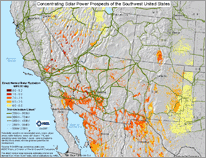 This
report focuses on the analysis of various groups researching
the renewable energy potential within the San Diego
Region. While plans in San Diego's Regional
Energy Strategy (RES) focused on bringing San Diego
County to 40% renewable energy by 2030, this report
looks further. In a clear and concise manner, it raises the possibility of having San Diego electricity
powered by 100% renewable energy. This
report focuses on the analysis of various groups researching
the renewable energy potential within the San Diego
Region. While plans in San Diego's Regional
Energy Strategy (RES) focused on bringing San Diego
County to 40% renewable energy by 2030, this report
looks further. In a clear and concise manner, it raises the possibility of having San Diego electricity
powered by 100% renewable energy.
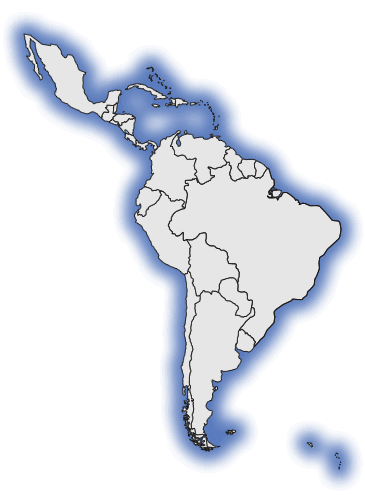 The
focus of this paper is to give an overview of the
potential of renewable energy of every country
in Latin America. Five different types of renewable
energy resources exist: solar power, wind power,
hydro power, geothermal and biomass. The purpose
of this work is to contribute to the development
of the widespread use of these renewable energy
sources to counter the increasing concentrations
of greenhouse gases, carbon dioxide and several
other gases in smaller amounts such as methane
and nitrous oxide, whose effects cause global warming. The
focus of this paper is to give an overview of the
potential of renewable energy of every country
in Latin America. Five different types of renewable
energy resources exist: solar power, wind power,
hydro power, geothermal and biomass. The purpose
of this work is to contribute to the development
of the widespread use of these renewable energy
sources to counter the increasing concentrations
of greenhouse gases, carbon dioxide and several
other gases in smaller amounts such as methane
and nitrous oxide, whose effects cause global warming.
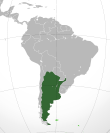 Argentina
has great potential for renewables, mainly due to
its varied geography and climate throughout the country.
An example would be that wind power farms could be
installed in more than half of Argentina's Natural
Territory. Argentina
has great potential for renewables, mainly due to
its varied geography and climate throughout the country.
An example would be that wind power farms could be
installed in more than half of Argentina's Natural
Territory.
 Brazil is one of the fastest growing countries in the world, and their energy consumption is following this same trajectory. The South American country has a choice between developing from mostly conventional energy, as developed countries have done before, or choosing a more environmentally friendly way by developing renewable energies. Brazil is one of the fastest growing countries in the world, and their energy consumption is following this same trajectory. The South American country has a choice between developing from mostly conventional energy, as developed countries have done before, or choosing a more environmentally friendly way by developing renewable energies.
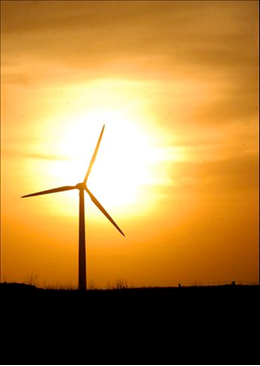 China
possesses enormous potential for the development of
renewable energy. The government has recently set
targets to be reached by 2010 and 2020 for installed
generating capacity. The two main sources of renewable
energy for China will be from hydropower and wind
power. China
possesses enormous potential for the development of
renewable energy. The government has recently set
targets to be reached by 2010 and 2020 for installed
generating capacity. The two main sources of renewable
energy for China will be from hydropower and wind
power.
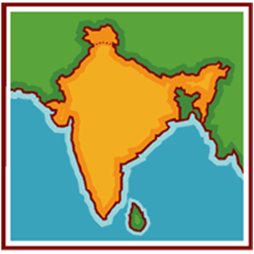 This
report gives an overview of the renewable energies
market in India. We look at the current status of
renewable markets in India, the energy needs of the
country, forecasts of consumption and production,
and we assess whether India can power its growth and
its society with renewable resources. This
report gives an overview of the renewable energies
market in India. We look at the current status of
renewable markets in India, the energy needs of the
country, forecasts of consumption and production,
and we assess whether India can power its growth and
its society with renewable resources.
This paper proposes that integration of enhanced electrical capacity realized through a
large-scale integration of renewable energy resources, such as wind and solar energy, in the
Indian electrical grid can lead to a smarter grid platform. This will ensure increased
efficiency, reliability, and security, as well as a dynamic programable renewable resource
mobilization in India leading to energy independence and an electrical grid that is much more
reliable, secure, efficient, and greener. Presentation
The Indian subcontinent faces challenges to energy security, reliable electricity for development, and blackouts. To mitigate these issues, an interconnected electricity ‘Supergrid’ can carry huge quanta of power across the sub-continent and provide for Renewable Energy generation. The supergrid provides energy security, more reliable delivery, boosts trading and eases cross border tensions. This paper assesses the need and conditions for a supergrid deployment and evaluates, ranks and maps the key risk factors facing the supergrid deployment in the sub-continent. Presentation
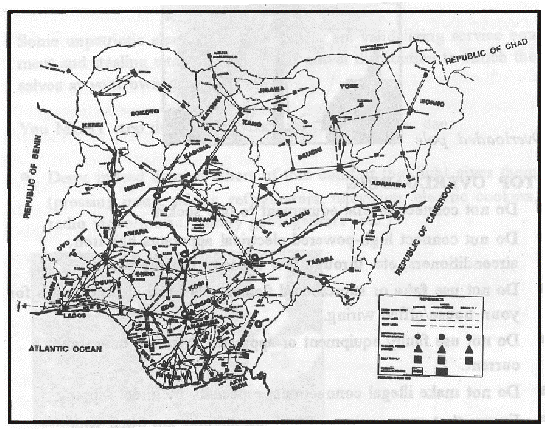 Technical research conducted recently concludes that a 100% stable power supply from renewable energy is possible in Nigeria. Nigeria is positioned perfectly at the moment for investment in renewables, especially as it continues to fight for a stable power supply with several power plants currently under construction and the privatization of the power sector from November, 2013. Technical research conducted recently concludes that a 100% stable power supply from renewable energy is possible in Nigeria. Nigeria is positioned perfectly at the moment for investment in renewables, especially as it continues to fight for a stable power supply with several power plants currently under construction and the privatization of the power sector from November, 2013.
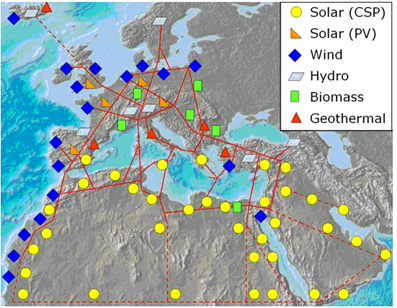 Solar
energy has the potential to equip the Middle East
with centuries of sustainable, clean electricity.
A solar power plant the size of Lake Masser has the
capacity of supplying the electiricty needs of the
entire region. Solar
energy has the potential to equip the Middle East
with centuries of sustainable, clean electricity.
A solar power plant the size of Lake Masser has the
capacity of supplying the electiricty needs of the
entire region.
 In
this article,
large-scale green energy systems can affordably replace
fossil fuel as the world's primary source of electricity
within 20 years, suggests new research from NOAA,
the United States weather office. In
this article,
large-scale green energy systems can affordably replace
fossil fuel as the world's primary source of electricity
within 20 years, suggests new research from NOAA,
the United States weather office.
Summary
This page links you to research on projects that forward the vision of each nation connected to a global grid of electricity, supplying 100% Renewable Energy:
- Links to 100% Renewable Energy Reports by GENI:
- Reports on National Renewable Energy Potential by GENI:
- Links to 100% Renewable Energy Reports by others:
| 